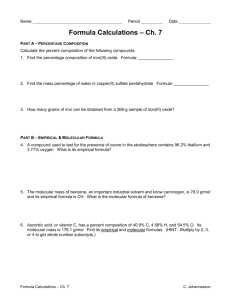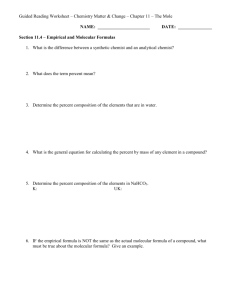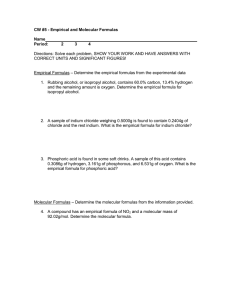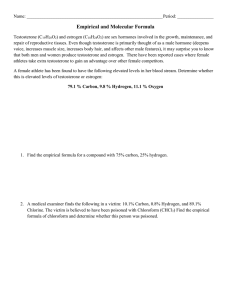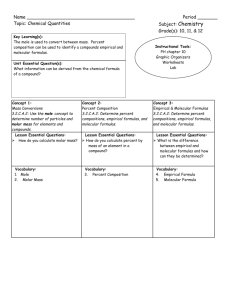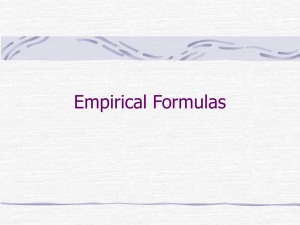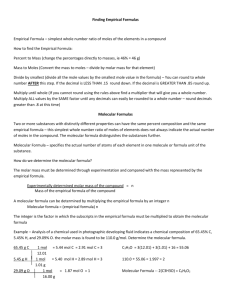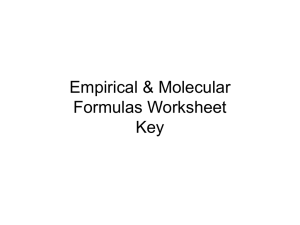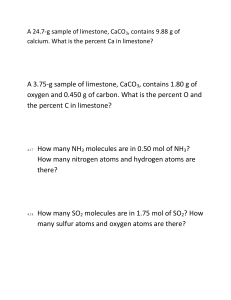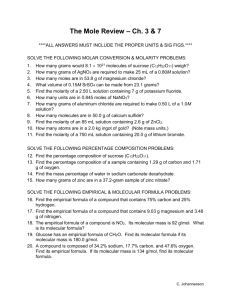Empirical & Molecular Formulas Worksheet
advertisement
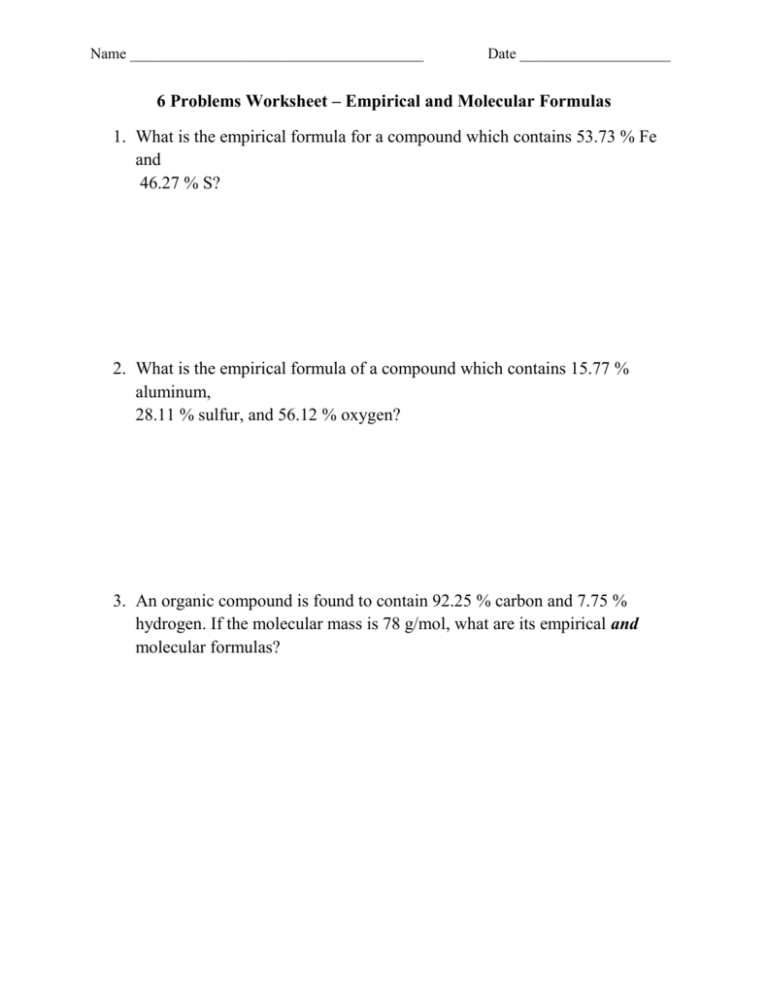
Name _______________________________________ Date ____________________ 6 Problems Worksheet – Empirical and Molecular Formulas 1. What is the empirical formula for a compound which contains 53.73 % Fe and 46.27 % S? 2. What is the empirical formula of a compound which contains 15.77 % aluminum, 28.11 % sulfur, and 56.12 % oxygen? 3. An organic compound is found to contain 92.25 % carbon and 7.75 % hydrogen. If the molecular mass is 78 g/mol, what are its empirical and molecular formulas? Name _______________________________________ Date ____________________ 4. The molecular mass of a compound is 92 g/mol. Analysis of this compound shows that there are 0.608 g of nitrogen and 1.388 g of oxygen. What are its empirical and molecular formulas? 5. There are two oxides of phosphorus. Both oxides can exist in different forms depending on the temperature and pressure. Calculate the empirical and molecular formulas from the data: (a) P: 56.4 % O: 43.7 % molecular mass: 220 g/mol (b) P: 43.6 % O: 56.4% molecular mass: 284 g/mol 6. A fat is composed of long chains of carbon and hydrogen atoms. In a reaction with a strong base, a fat forms a soap and glycerol. What is the empirical formula of a fat containing 77.60 % carbon, 11.45 % oxygen, and 10.95 % hydrogen? What is its molecular formula if its molecular mass is 1253 g/mol? Name _______________________________________ Date ____________________ 7. Magnesium chloride forms a hydrated salt. When a sample of magnesium chloride is analyzed, it is found to contain 53.20 % water. Calculate the formula of this hydrate. 8. A hydrated sodium salt containing 39.7 % water is analyzed as follows: Na 16.9 %; C 17.7 %; H 6.67 %; and O 58.8 %. What is the formula of this salt?
